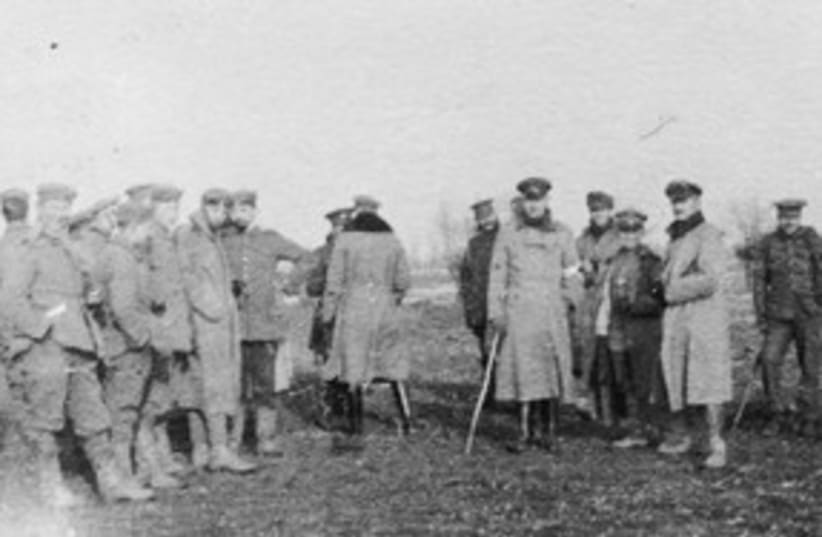RELATED:This Week in History: The Knesset moves to JerusalemThe most famous story took place near Ypres, Belgium, where British troops made out the melody of Stille Nacht (Silent Night) being sung from the German lines and sang back the same carol in English. Each round of song elicited applause from the opposing trenches, replacing the booms and cracks of artillery and rifle fire that had raced across the narrow stretch of land separating the two sides only hours before.Soon shouts in broken English replaced the song. "You no fight, we no fight," the Germans yelled at their enemies, Dominic J. Caraccilo tells in Beyond Guns and Steel. Small groups and sometimes individual soldiers from both sides climbed out of their trenches and walked toward one another, stepping over the concertina wire and heavy guns. Without a common language in most cases, the enemy soldiers shook hands and exchanged Christmas greetings and tobacco.It is not known exactly where the 1914 Christmas Truce began, if it broke out spontaneously in far away battlefields or if it spread along the long lines of trenches. But the scenes that took place were similar in locations all along the western front. By most modern estimates, 100,000 troops on both sides took part in the impromptu fraternization among young men enlisted to kill one another.The next morning, Christmas Day, the unofficial ceasefire continued. Troops from both sides collected their dead, some of whom had for weeks been left lying on the frozen ground separating the trenches. In a handful of cases Germans and Brits held communal burial ceremonies in both English and German.One account by a German army major, published decades later by a German magazine, described the scene:
We heard that it was the wish of the Englishman to bury on the occasion of the Christmas holiday their dead who were lying before the front … Our padre … arranged the prayers and psalm and an interpreter wrote them out in German. They were read first in English by our padre and then in German by a boy who was studying for the ministry. It was an exciting and most wonderful sight. The Germans formed up on one side, the English on the other, the officers standing in front, every head bared.
Among the more astounding occurrences of the Christmas Truce – and the one most questioned by historians – were tales of friendly soccer matches that broke out between the two sides. In Silent Night: The Story of the World War I Christmas Truce, Stanley Weintraub cites a German soldier's journal describing one such game. What started with an Englishman and a German kicking around a ball soon "developed into a regulation football match with caps casually laid out as goals. The ground was frozen was no great matter … The game ended 3-2 for Fritz (the Germans)."The truce, which would be unfathomable in modern warfare, lasted until after New Years Day in some places but only until December 26 in most. In The World War I Reader by Michael S. Neiberg, one British officer is quoted describing the last moments of the anomalous truce in the early morning hours of Christmas Day 1914:I fired three shots in the air and put up a flag with 'Merry Christmas' on it, and I climbed on the parapet. He put up a sheet with 'Thank you' on it and the German Captain appeared on the parapet. We both bowed and saluted and got down into our respective trenches, and he fired two shots in the air, and the war was on again.
Senior officers behind the lines did not, however, sanction or view with such lightheartedness the Christmas Truce of 1914. Many derided the spontaneous and scattered ceasefire as a rebellion against the military and political command echelons.Testifying to the English Parliament 16 years later, Sir H. Kingsley Wood, an English major who took part in the Christmas Truce and later became a cabinet minister, described the sentiment of the unique moment: “The fact is that we did it, and I then came to the conclusion that I have held very firmly ever since, that if we had been left to ourselves there would never have been another shot fired."
